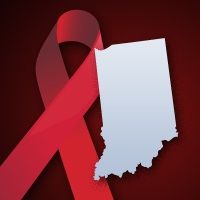Article
Case History: When an HIV Epidemic Hit a 'One-Stoplight Town'
Author(s):
No one was more shocked than local HIV specialists when an epidemic of HIV hit a small town in Indiana. Diane Janowicz, MD, a Bloomington, Indiana AIDS/HIV specialist gave ID Week attendees a detailed description of how she and other health officials and entities handled the case.

Infection with HIV/AIDS is usually associated with urban populations. "Then it happened in our one-stoplight town of 4,000 residents," said Diane Janowicz, MD, an Indiana specialist in HIV/AIDS. The town was Austin, Indiana, in Scott County which is in the southern part of the state.
It is a poor town with high unemployement and one that seems low on hope. Ten percent of residents are unemployed, and 19% are below the federal poverty line. More than one in five adult residents has not completed high school.
Not surprisingly, there is a high level of drug use, Janowicz said.
Oxycodone tablets used to be the drug of choice and users simply swallowed them. Then in an apparent case of good intentions going wrong, efforts to make the drugs more difficult to abuse by swallowing worked. But that just led to addicts finding ways to crush the drugs, get the active ingredients into an injectable form, and then taking them by needle. "That's what addicts do," she said.
With little else to occupy their leisure time, users would inject from 2 to 20 times a day and 20 partners would share a needle," she said, a prescription for disaster.
The practice was so common in the town that "We learned of multi-generational use," where "Sons and daughters and moms would all inject at the same time."
Families kept sets of needles like some families keep special flatware. "They would take out their needles and share," she said. It did not help that Indiana had made it a felony to possess a non-prescribed needle and syringe set.
By the spring of 2015, the county was dealing with 55 cases of HIV and 13 preliminary cases, all of which turned out to be HIV infection. All were traced to one infected drug user.
The average age was 33 and there were about the same numbers of men and women. All were non-Hispanic whites. "Most also had hepatitis C," she said.
When the epidemic was discovered, she and colleagues at a variety of state, local, and federal agencies and private medical institutions came up with an effective strategy. At the time there was not a single HIV specialist or provider in the community.
They set up a Community Outreach Center, open long hours with a no-appointment needed policy. The emphasis was on being warm and accepting and non-judgmental. Word soon spread that visitors could get tested, treated, signed up for insurance, and a variety of non-medical services as well. They could also get mental health treatment. "We enrolled 465 people," she said.
They also geared up a needle exchange program including three workers in a mobile van who would make housecalls to targeted neighborhoods, asking if anyone needed clean needles.
That worked well, though not all users are on board yet, she said.
So far about 200 people are participating in needle exchange.
The center offered drug counseling and also trained workers in how to prescribe naloxone and bupenorphrine. They also did outreach in local jails.About 10% to 20% of the people with HIV in the cluster were in jail.
Medical students and medical residents who volunteered were put to work and the two local pharmacies were brought into the loop and advised what medications were going to be prescribed to treat the infections. "Luckily our [HIV] drug regimen worked," she said, "It was early in the epidemic and most patients still had high CD4 counts."
The epidemic is now under control, and many public health lessons have been learned. About 8 patients are currently taking Truvada for pre-exposure prophylaxis, a therapy "we hope to scale up."
The atmosphere has gone from a sense of total devastation to one of hope.
One of the most rewarding moments came when the community center got a letter from a patient saying how surprised and pleased she was at the "welcoming, nonjudgmental, respectful environment." In a small town where everyone knows everyone, "that's very necessary," Janowicz said.




